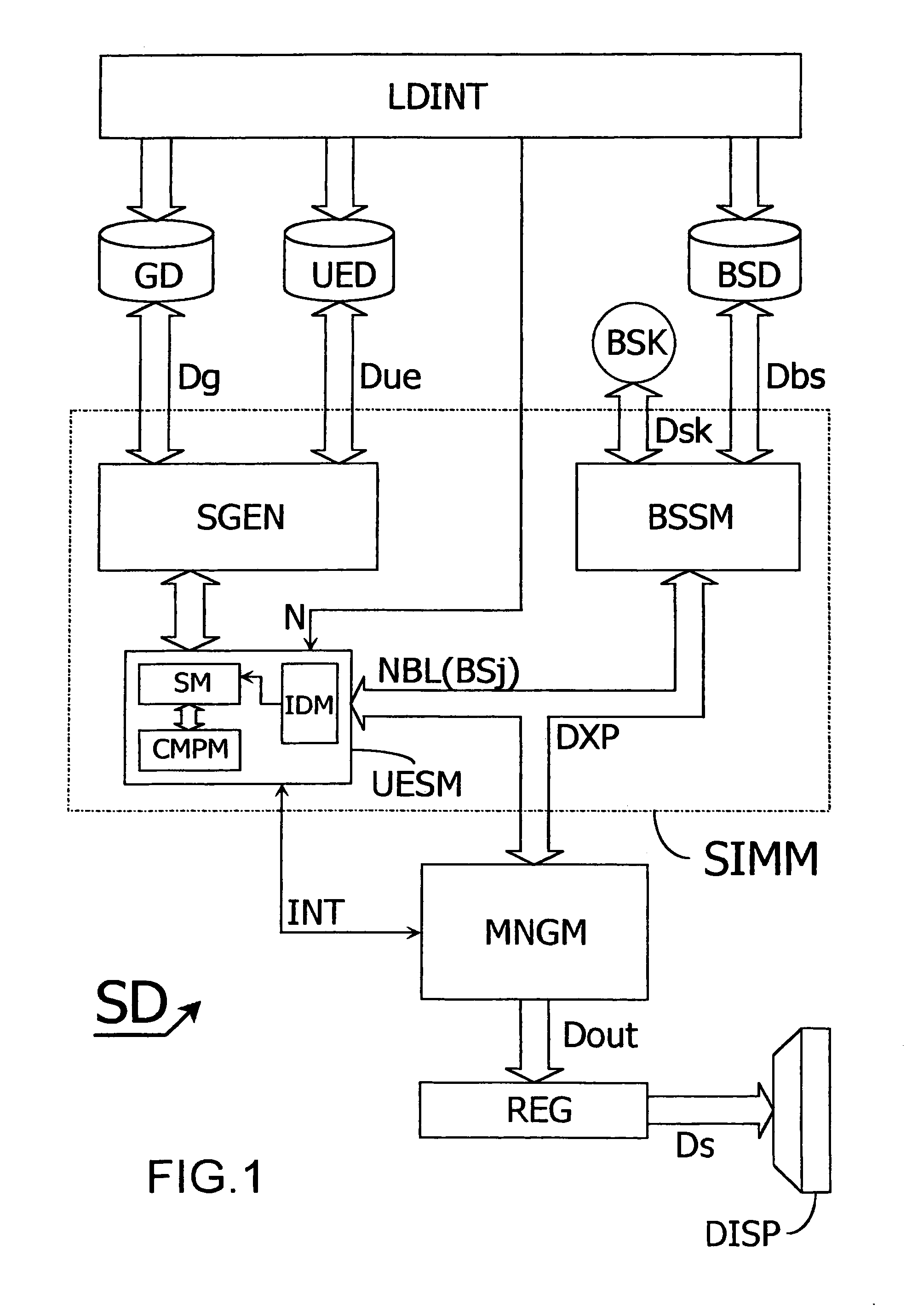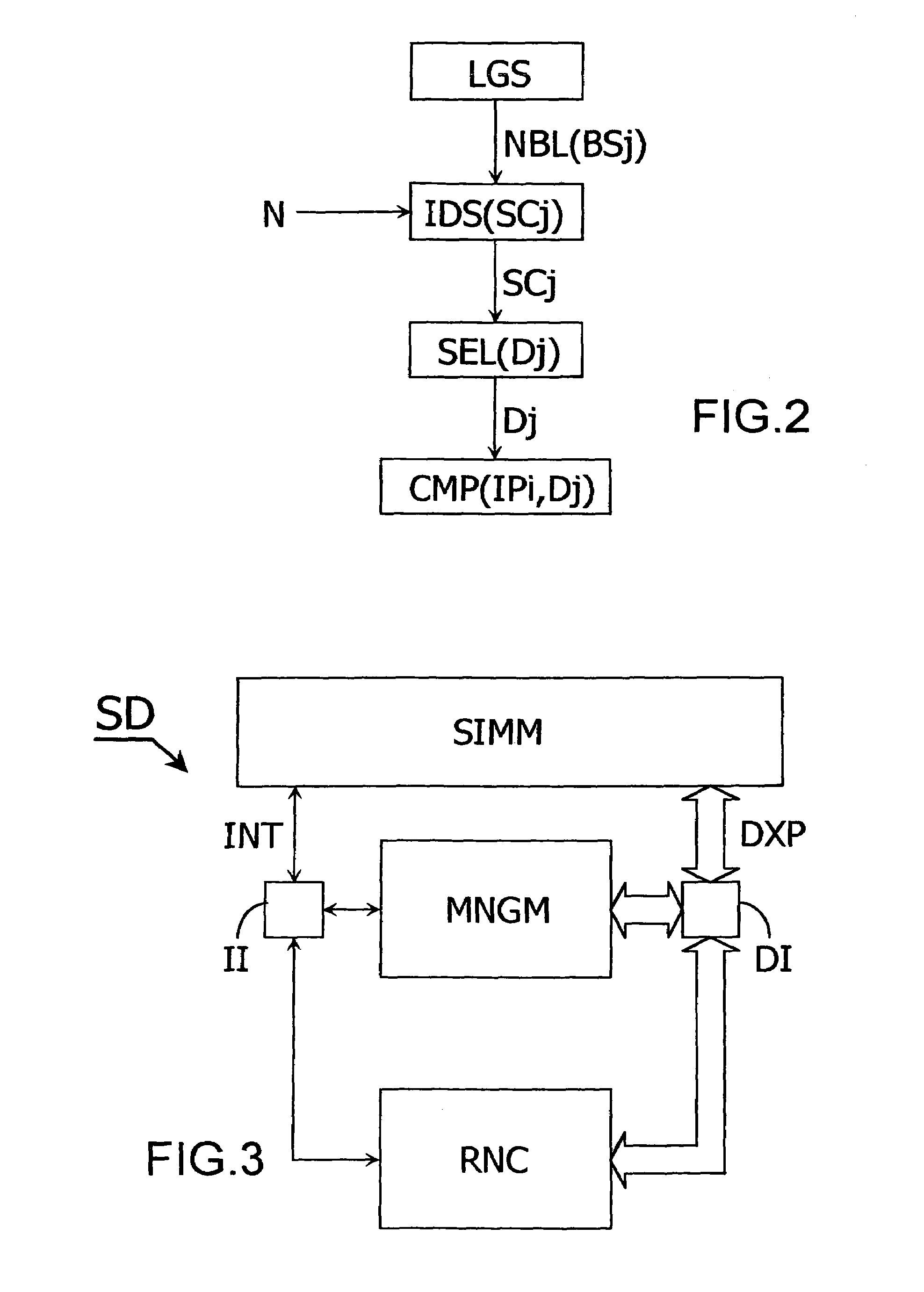Method of simulating operating conditions of a telecommunication system requiring a limited amount of computing power
a telecommunication system and computing power technology, applied in the field of simulating operating conditions of a telecommunication system, can solve the problems of requiring huge memory space and processing power for performing all necessary read/write operations, unable to accurately obtain the results of a method, and affecting the quality of each ongoing communication
- Summary
- Abstract
- Description
- Claims
- Application Information
AI Technical Summary
Benefits of technology
Problems solved by technology
Method used
Image
Examples
Embodiment Construction
[0049]Referring now to the drawings where like reference designations identify the same or corresponding parts throughout the several views, FIG. 1 diagrammatically shows a simulation device SD intended to simulate operating conditions of a telecommunication system, in which a method according to the present invention is used. This device SD includes a first database GD, intended to store geographical data pertaining to a landscape over which the telecommunication system is intended to be deployed, for example models of obstacles like buildings, mountains, etc. The simulation device SD further includes a second database BSD, intended to store data pertaining to radio base stations forming a network in the system, like a geographical location of each base station, a maximum number of communications each base station is able to handle at a given instant, or a maximum transmitting power each base station is able to apply to its ongoing communications, etc. The simulation device SD also...
PUM
 Login to View More
Login to View More Abstract
Description
Claims
Application Information
 Login to View More
Login to View More - R&D
- Intellectual Property
- Life Sciences
- Materials
- Tech Scout
- Unparalleled Data Quality
- Higher Quality Content
- 60% Fewer Hallucinations
Browse by: Latest US Patents, China's latest patents, Technical Efficacy Thesaurus, Application Domain, Technology Topic, Popular Technical Reports.
© 2025 PatSnap. All rights reserved.Legal|Privacy policy|Modern Slavery Act Transparency Statement|Sitemap|About US| Contact US: help@patsnap.com



